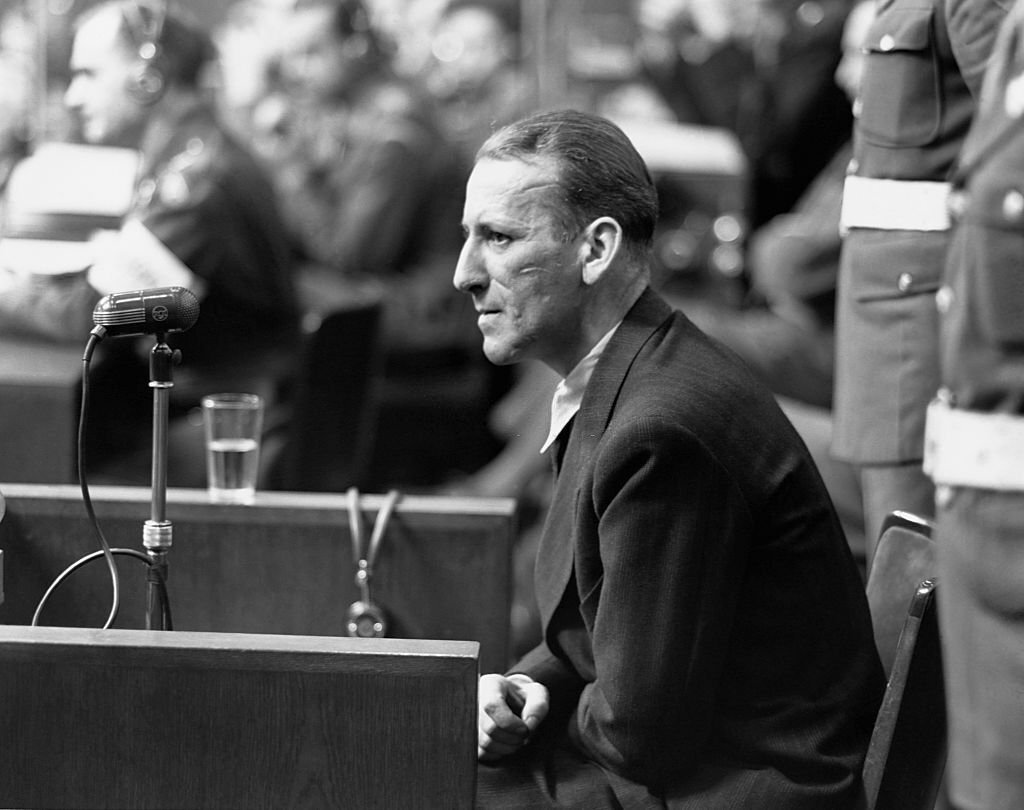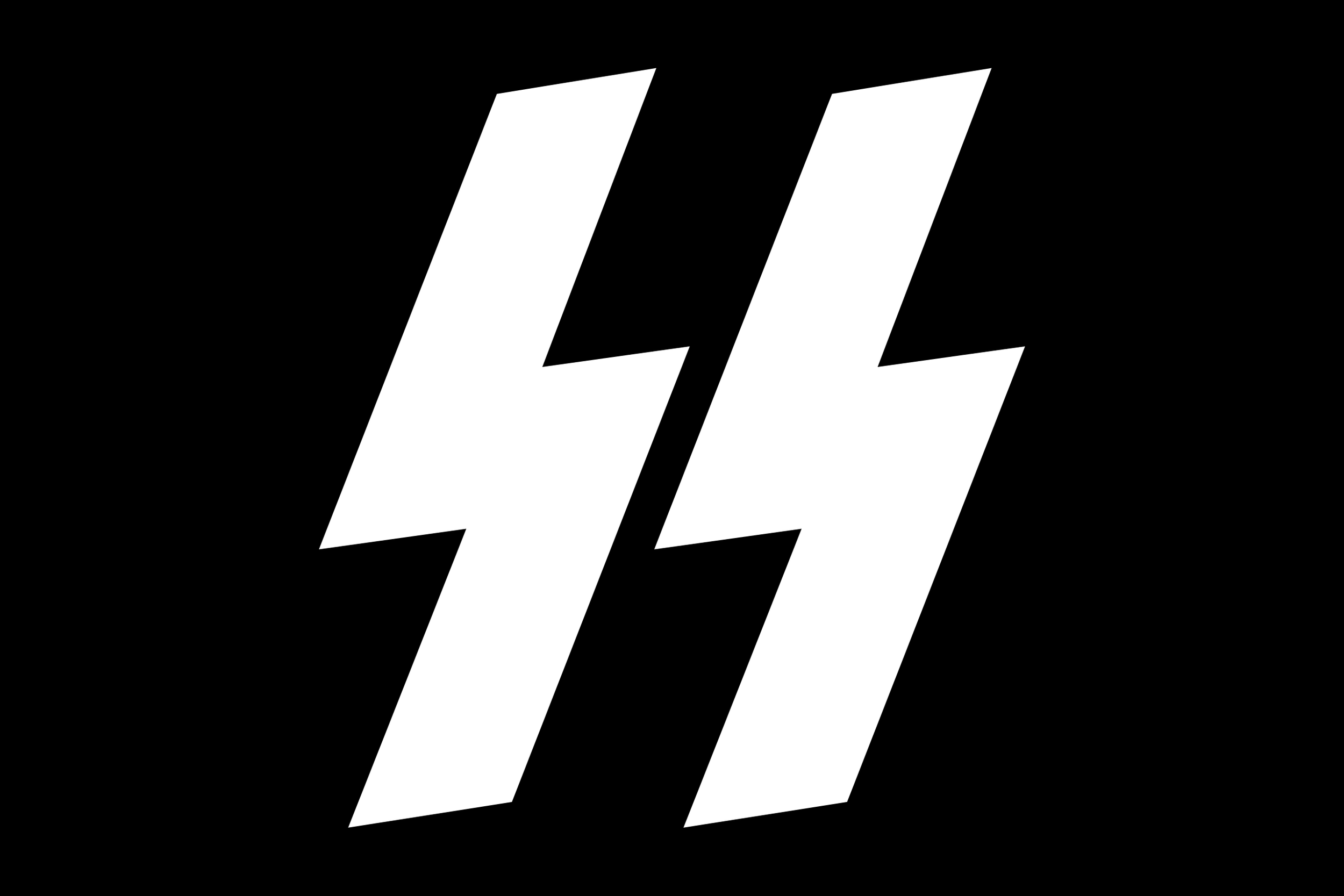
As chief of the RSHA, Kaltenbrunner was thereby responsible for the activities of the German security and police force. He was present at a meeting between top Nazi officials Heydrich, Himmler, Goebbels, and even the Führer himself, during which it was decided that the Jews should be systematically exterminated.
Ernst Kaltenbrunner
Early life
Kaltenbrunner was born in Ried im Innkreis, Austria, the son of a lawyer, spent his early years and primary education in Raab and later attended the Realgymnasium in Linz. Raised in a nationalist family, he was childhood friends with Adolf Eichmann, the infamous SS officer who played a key role in implementing the Nazis' "Final Solution" against Europe's Jews. After Gymnasium, Kaltenbrunner went on to obtain his PhD in law at Graz University in 1926.
Kaltenbrunner worked at a law firm in Salzburg for a year before opening his own law office in Linz. He had deep scars on his face reportedly from dueling in his student days, although some sources attribute them to a car accident.
On 14 January 1934, Kaltenbrunner married Elisabeth Eder (born 20 October 1908, Linz, Upper Austria - died 20 May 2002, Linz), who was also a Nazi Party member; the couple had three children. In addition to the children from his marriage, Kaltenbrunner had twins, Ursula and Wolfgang (b. 1945) with his long-time mistress, Gisela Gräfin von Westarp (27 June 1920, Wittenberg an der Elbe – 2 June 1983, Munich). All the children survived the war.
Rising through the ranks
On 18 October 1930, Kaltenbrunner joined the Nazi Party as member number 300,179. In 1931, he was the Bezirksredner (district speaker) for the Nazi Party in Upper Austria. Kaltenbrunner joined the SS on 31 August 1931; his SS number was 13,039. He first became a Rechtsberater (legal consultant) for the Nazi Party in 1929 and later held this same position for SS Abschnitt (Section) VIII, beginning in 1932. That same year he began working at his father's law practice, and by 1933 he had become head of the National-Socialist Lawyers' League in Linz.
Acting on orders from Hermann Göring, Kaltenbrunner assisted in bringing about the Anschluss with Germany (13 March 1938); he was awarded the role of State Secretary for Public Security in the Seyss-Inquart cabinet of 11 to 13 March 1938. Controlled from behind the scenes by Himmler, Kaltenbrunner still led, albeit clandestinely, the Austrian SS as part of his duty to "coordinate" and manage the Austrian population - this entailed the Nazification of all aspects of Austrian society. Then on 21 March 1938, he was promoted to SS-Brigadeführe.
Kaltenbrunner with Ordnungspolizei officials in Vienna in 1940 following the 1938 Anschluss
Kaltenbrunner, Heinrich Himmler and August Eigruber (in black) inspect Mauthausen concentration camp in 1941, in the company of camp commander Franz Ziereis (center left)
Kaltenbrunner helped establish the Mauthausen-Gusen concentration camp near Linz. Mauthausen was the first Nazi concentration camp opened in Austria following the Anschluss. On 11 September 1938, Kaltenbrunner was promoted to the rank of SS-Gruppenführer (equivalent to a lieutenant general in the German Army) while holding the position of Führer of SS-Oberabschnitt Österreich (re-designated SS-Oberabschnitt Donau in November 1938). Also in 1938 he was appointed High SS and police leader (Höherer SS- und Polizeiführer; HSSPF) for Oberabschnitt Donau, which was the primary SS command in Austria (he held that post until 30 January 1943)
Kaltenbrunner replaced Heydrich, who had been assassinated in June 1942. Kaltenbrunner held this position until the end of World War II. Hardly anyone knew Kaltenbrunner, and upon his appointment, Himmler transferred responsibility both for SS personnel and for economics from the RSHA to the SS Main Economic and Administrative Office. Nonetheless, Kaltenbrunner was promoted to SS-Obergruppenführer und General der Polizei on 21 June 1943. He also replaced Heydrich as president (serving from 1943 to 1945) of the International Criminal Police Commission (ICPC), the organization today known as Interpol.
During the summer of 1943, Kaltenbrunner conducted his second inspection of the Mauthausen-Gusen concentration camp. While he was there, 15 prisoners were selected to demonstrate for Kaltenbrunner three methods of killing: by a gunshot to the neck, hanging, and gassing. After the killings were performed, Kaltenbrunner inspected the crematorium and later the quarry. In October 1943, he told Herbert Kappler, the head of German police and security services in Rome, that the "eradication of the Jews in Italy" was of "special interest" for "general security". Four days later, Kappler's SS and police units began rounding up and deporting Jews by train to Auschwitz concentration camp.
It was said that even Himmler feared him, as Kaltenbrunner was an intimidating figure with his 1.94 metres (6 ft 4 in) height, facial scars, and volatile temper. Kaltenbrunner was also a longtime friend of Otto Skorzeny and recommended him for many secret missions, allowing Skorzeny to become one of Hitler's favorite agents. Kaltenbrunner also allegedly headed Operation Long Jump, an alleged plan to assassinate Stalin, Churchill, and Roosevelt in Tehran in 1943.
Kaltenbrunner with Himmler and Ziereis at Mauthausen in April 1941
Immediately in the wake of the 20 July Plot on Hitler's life in 1944, Kaltenbrunner was summoned to Hitler's wartime headquarters at the Wolfsschanze (Wolf's Lair) in East Prussia to begin the investigation into who had planned the assassination attempt. Once it was revealed that an attempted military coup against Hitler had been launched, Himmler and Kaltenbrunner had to tread carefully, as the military was not under the jurisdiction of the Gestapo or the SD. When the attempt failed, the conspirators were soon identified. An estimated 5,000 people were eventually executed, with many more sent to concentration camps.
Historian Heinz Höhne counted Kaltenbrunner among the fanatical Hitler loyalists and described him as being committed "to the bitter end". Field reports from the SD in October 1944 about deteriorating morale in the military prompted Kaltenbrunner to urge the involvement of the RSHA in military court-martial proceedings, but this was rejected by Himmler, who thought it unwise to interfere in Wehrmacht (military) affairs. In December 1944, Kaltenbrunner was granted the additional rank of General of the Waffen-SS. On 15 November 1944 he was awarded the Knights Cross of the War Merit Cross with Swords. In addition, he was awarded the NSDAP Golden Party Badge and the Blutorden (Blood Order).
On 18 April 1945, three weeks before the war ended, Himmler named Kaltenbrunner commander-in-chief of the remaining German forces in southern Europe. Kaltenbrunner attempted to organize cells for post-war sabotage in the region and Germany, but accomplished little. Hitler made one of his last appearances on 20 April 1945 outside the subterranean Führerbunker in Berlin, where he pinned medals on boys from the Hitler Youth for their bravery. Kaltenbrunner was among those present, but realizing the end was near, he then fled from Berlin.
Arrest
On 12 May 1945 Kaltenbrunner was apprehended along with his adjutant, Arthur Scheidler, and two SS guards in a remote cabin at the top of the Totes Gebirge mountains near Altaussee, Austria, by a search party initiated by the 80th Infantry Division, Third U.S. Army. Information had been gained from Johann Brandauer, the assistant burgermeister of Altaussee, that the party was hiding out with false papers in the cabin. This was supported by an eyewitness sighting by the Altaussee mountain ranger five days earlier. Special Agent Robert E. Matteson from the C.I.C. Detachment organized and led a patrol consisting of Brandauer, four ex-Wehrmacht soldiers, and a squad of US soldiers to effect the arrest. The party climbed over mountainous and glacial terrain for six hours in darkness before arriving at the cabin. After a short standoff, all four men exited the cabin and surrendered without a shot fired. Kaltenbrunner claimed to be a doctor and offered a false name. However, upon their arrival back to town his last mistress, Countess Gisela von Westarp, and the wife (Iris) of his adjutant Arthur Scheidler chanced to spot the men being led away; the ladies called out to both men and embraced them. This action resulted in their identification and arrest by US troops.
In 2001, Ernst Kaltenbrunner's personal Nazi security seal was found in an Alpine lake in Styria, Austria, 56 years after he had thrown it away to hide his identity. The seal was recovered by a Dutch citizen on holiday. The seal has the words "Chef der Sicherheitspolizei und des SD" (Chief of the Security Police and SD) engraved on it. Experts have examined the seal and believe it was discarded in the final days of the war in May 1945.
Kaltenbrunner testifying as a witness on his own behalf at the International Military Tribunal
Kaltenbrunner wheeled into court during the Nuremberg trials after a brain hemorrhage during interrogation.
Nuremberg trials
At the Nuremberg trials, Kaltenbrunner was charged with conspiracy to commit crimes against peace, war crimes and crimes against humanity.[50] Due to the areas over which he exercised responsibility as an SS general and as chief of the RSHA, he was acquitted of crimes against peace, but held responsible for war crimes and crimes against humanity.
During the initial stages of the Nuremberg trials, Kaltenbrunner was absent because of two episodes of subarachnoid hemorrhage, which required several weeks of recovery time. After his health improved, the tribunal denied his request for pardon. When he was released from a military hospital he pleaded not guilty to the charges of the indictment against him. Kaltenbrunner said all decrees and legal documents that bore his signature were "rubber-stamped" and filed by his adjutant(s). He also said Gestapo Chief Heinrich Müller had illegally affixed his signature to numerous documents in question.
Kaltenbrunner argued in his defence that his position as RSHA chief existed only theoretically and said he was only active in matters of espionage and intelligence. He maintained that Himmler, as his superior, was the person culpable for the atrocities committed during his tenure as chief of the RSHA. Kaltenbrunner also asserted that he had no knowledge of the Final Solution before 1943 and went on to claim that he protested against the ill-treatment of the Jews to Himmler and Hitler. Further denials from Kaltenbrunner included statements that he knew nothing of the Commissar Order and that he never visited Mauthausen concentration camp, despite documentation of his visit. At one point, Kaltenbrunner went so far as to avow that he was responsible for bringing the Final Solution to an end. In response to his denials, people in the courtroom laughed
Conviction and execution
On 30 September 1946, the International Military Tribunal (IMT) found Kaltenbrunner not guilty of crimes against peace, but guilty of war crimes and crimes against humanity (counts three and four). On 1 October 1946, the IMT sentenced him to death by hanging.
Kaltenbrunner was executed on 16 October 1946, around 1:15 a.m., in Nuremberg. His body, like those of the other nine executed men and that of Hermann Göring (who committed suicide the previous day), was cremated at the Eastern Cemetery in Munich and the ashes were scattered in a tributary of the River Isar.
Ernst Kaltenbrunner - The Man Who Replaced Reinhard Heydrich Documentary
Born
4 October 1903
Ried im Innkreis, Archduchy of Austria above the Enns, Austria-Hungary
Died 16 October 1946 (aged 43)
Nuremberg Prison, Nuremberg, Allied-occupied Germany.
Kaltenbrunner's body after execution by hanging on 16 October 1946








